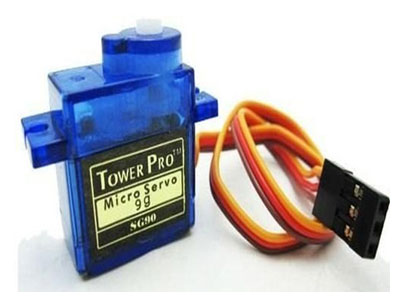Key Takeaway
Servo motor rated speed is the speed at which the motor can consistently operate while delivering optimal performance. Typically, the rated speed for most servo motors is around 3,000 RPM. This speed ensures that the motor can handle its load effectively without overheating or losing efficiency.
Rated speed is crucial when selecting a servo motor because it directly affects the motor’s performance in your application. If the rated speed is too low or too high for your specific needs, the motor may not perform as required, leading to issues like inadequate torque or overheating. Therefore, choosing a motor with the appropriate rated speed is essential for achieving reliable and efficient operation.
Explanation of Rated Speed in Servo Motors
Rated speed in servo motors refers to the maximum speed at which the motor can operate reliably under specified conditions without compromising performance or longevity. It is typically measured in revolutions per minute (RPM) and is a crucial parameter provided by manufacturers in the motor’s datasheet. Understanding the rated speed is essential for engineers as it defines the upper limit of the motor’s operational capacity. For instance, a servo motor with a rated speed of 4,000 RPM is designed to perform optimally at that speed, ensuring smooth and efficient operation. Exceeding the rated speed can lead to overheating, increased wear and tear, and potential failure of the motor. Therefore, the rated speed serves as a guideline to match the motor’s capabilities with the requirements of the application, ensuring both performance and durability.

Importance of Rated Speed in Motor Selection
Selecting the right servo motor involves carefully considering its rated speed to ensure it meets the specific needs of your application. Rated speed is a key factor that influences how well a motor can perform tasks such as positioning, tracking, and controlling motion. For example, in high-speed assembly lines, motors with higher rated speeds are preferred to achieve faster production rates. Conversely, applications requiring precise and controlled movements, like robotic arms, may benefit from motors with lower rated speeds that offer greater torque and accuracy. Additionally, matching the rated speed with the application’s operational demands helps prevent motor overload and extends its lifespan. Ignoring the rated speed can result in suboptimal performance, increased energy consumption, and higher maintenance costs. Therefore, understanding and prioritizing rated speed during motor selection is vital for achieving efficient and reliable system performance.
How Rated Speed Affects Servo Motor Performance
The rated speed of a servo motor directly impacts its overall performance, influencing factors such as torque, responsiveness, and energy efficiency. At the rated speed, the motor operates at its optimal balance between torque and velocity, ensuring smooth and consistent motion. Higher rated speeds allow for faster movements and quicker response times, which are essential in applications like CNC machining and high-speed robotics. However, operating near the rated speed ensures that the motor does not overheat or experience excessive wear, maintaining its performance over time. On the other hand, running a motor below its rated speed can increase torque output but may lead to inefficiencies if the speed is too low for the application’s needs. Therefore, understanding how rated speed affects performance helps engineers fine-tune motor operations, achieving the desired balance between speed and torque while maintaining reliability and efficiency.
Determining the Appropriate Rated Speed for Your Application
Choosing the appropriate rated speed for your application involves evaluating several key factors to ensure optimal motor performance. First, consider the specific requirements of your application, such as the desired speed of operation, the precision needed, and the load the motor must handle. For instance, high-speed applications like conveyor belts require motors with higher rated speeds, while precision tasks like robotic assembly need motors with moderate to lower rated speeds for accurate control. Additionally, evaluate the operating environment, including temperature and potential exposure to dust or moisture, as these can affect motor performance and longevity. It’s also important to factor in the motor’s torque requirements, as higher speeds typically mean lower torque and vice versa. By carefully assessing these elements, you can select a servo motor with a rated speed that not only meets your performance needs but also ensures reliability and efficiency in your specific application.
Common Rated Speeds for Popular Servo Motors
Servo motors come with a variety of rated speeds tailored to different applications, making it easier to find the right motor for your needs. Common rated speeds for hobbyist and small-scale applications typically range from 1,000 to 3,000 RPM. These motors are ideal for projects like model airplanes, small robots, and DIY automation systems, where precise control and sufficient torque are more important than high speed. In industrial settings, servo motors often have higher rated speeds, ranging from 3,000 to 5,000 RPM or more. These motors are used in applications such as CNC machines, automated assembly lines, and high-speed robotics, where fast and efficient motion is crucial. Additionally, specialized servo motors designed for high-performance tasks can exceed 5,000 RPM, providing the speed necessary for cutting-edge manufacturing processes and advanced robotics. Understanding the common rated speeds available helps engineers select the appropriate motor type that aligns with their specific application requirements, ensuring optimal performance and efficiency.
Conclusion
Rated speed is a fundamental aspect of servo motor efficiency, playing a pivotal role in determining how well a motor performs within its intended application. By understanding and selecting the appropriate rated speed, engineers can ensure that servo motors operate smoothly, deliver the necessary torque, and maintain energy efficiency. This not only enhances the performance and reliability of the system but also extends the motor’s lifespan, reducing maintenance costs and downtime. Whether designing high-speed industrial machinery or precision robotic systems, considering the rated speed helps achieve the perfect balance between speed and torque, ensuring that the motor meets the specific demands of the task. Ultimately, the rated speed is a key factor in optimizing servo motor efficiency, enabling engineers to create more effective and sustainable solutions in a wide range of applications.
